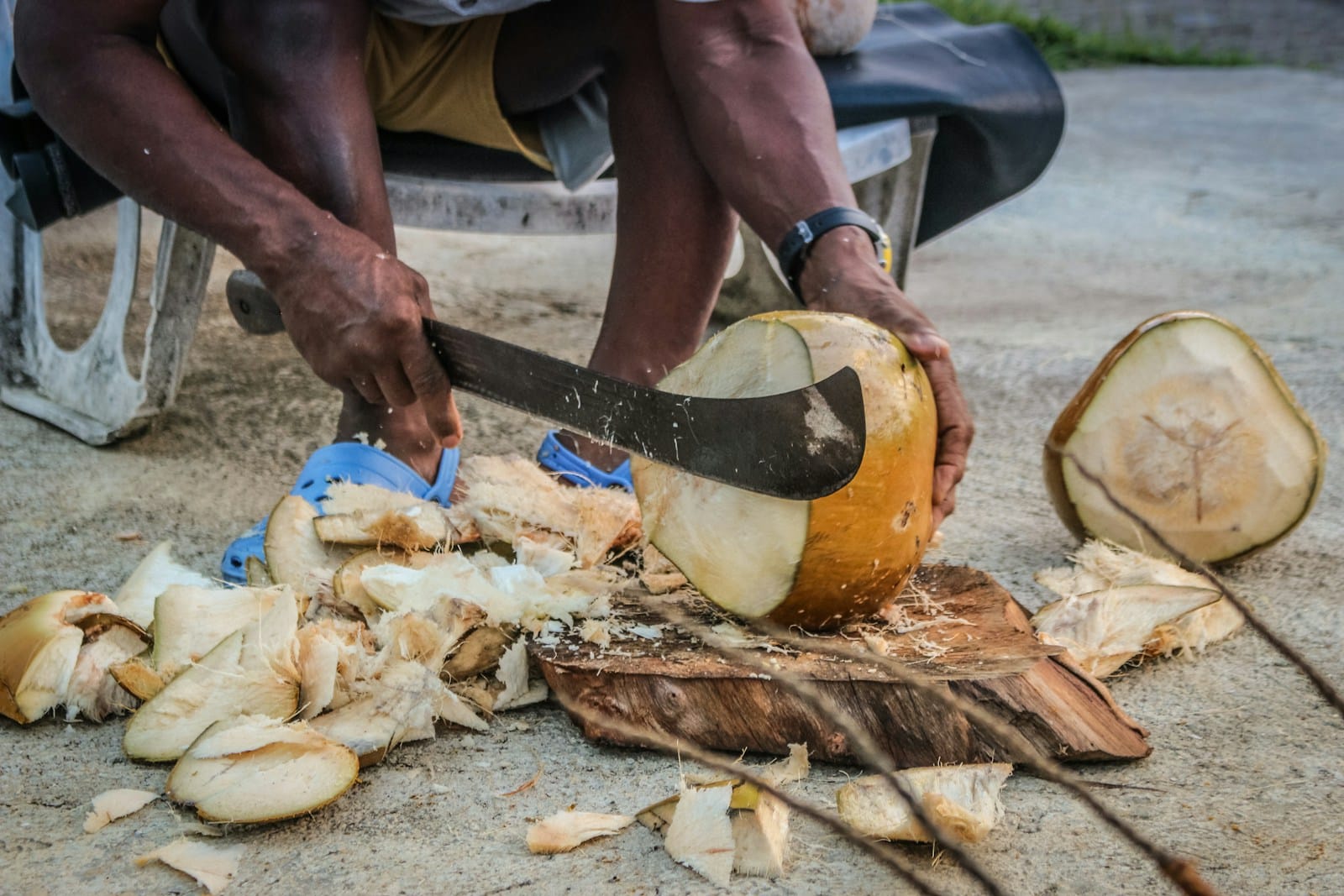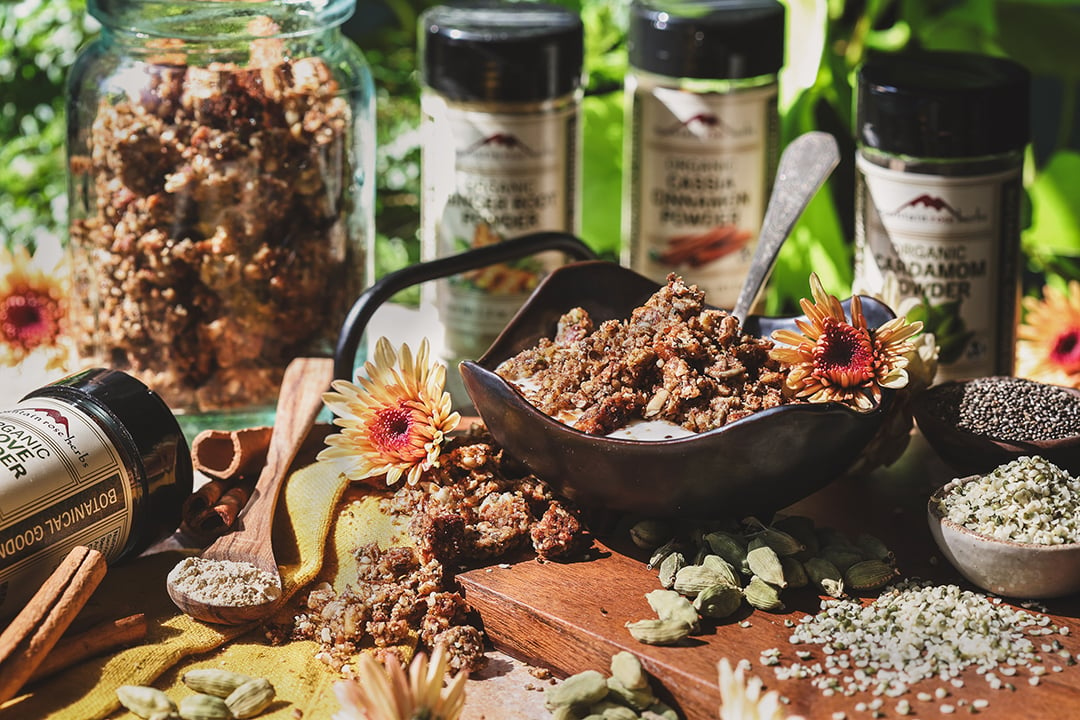Opening a coconut might seem daunting, but mastering this tropical skill unlocks access to fresh coconut water and creamy white meat. Whether you’re preparing for a tropical recipe or simply wanting to enjoy this nutritious fruit, knowing the proper techniques makes the process straightforward and safe.
Fresh coconuts offer superior taste compared to processed alternatives, providing natural electrolytes and healthy fats. The key lies in understanding coconut anatomy and using the right tools for each step of the cracking process.
Choosing and preparing your coconut for opening
Selecting the perfect coconut requires attention to several important factors. A fresh coconut should feel heavy for its size, indicating plenty of coconut water inside. Shake the coconut gently near your ear – you should hear liquid sloshing around inside.
Examine the three dark spots at one end, called the coconut’s “eyes.” These should appear dry without any signs of mold or dark discoloration. Avoid coconuts with cracks, wet spots, or any visible damage to the hard outer shell.
Before beginning the opening process, gather essential tools that will make your task easier and safer. You’ll need a sharp knife, a hammer or meat mallet, a screwdriver or ice pick, and a clean kitchen towel. Having a large bowl ready helps catch the valuable coconut water.
Just as learning how to eat a hachiya persimmon requires understanding ripeness indicators, coconut selection demands recognizing freshness signs. Place your coconut on a stable surface covered with the kitchen towel to prevent slipping during the opening process.
Draining coconut water using the eye method
The most efficient approach to opening coconuts starts with draining the coconut water through the natural weak points. Locate the three eyes at the coconut’s top – these circular indentations vary in softness, with typically one being softer than the others.
Test each eye by pressing firmly with your thumb or the tip of a screwdriver. The softest eye will yield slightly under pressure. Once identified, use your ice pick or screwdriver to pierce through this eye, creating a drainage hole.
Creating a second hole opposite the first ensures smooth water flow and prevents vacuum formation. Pierce the second eye using the same technique, applying steady downward pressure while twisting the tool slightly.
Position your coconut over a clean bowl with the holes facing downward. Allow gravity to drain the coconut water completely – this usually takes several minutes. Fresh coconut water should appear clear and smell pleasant, with a slightly sweet aroma.
The drained coconut water can be consumed immediately or stored in the refrigerator for up to three days. This natural beverage contains essential electrolytes and makes an excellent hydration choice, much like how proper storage techniques matter for produce – for instance, knowing the best place to store potatoes ensures optimal freshness.
Cracking the shell and extracting coconut meat
After draining, breaking the coconut shell requires the right technique to avoid injury and maximize meat extraction. Wrap the drained coconut in your kitchen towel to contain shell fragments and provide better grip during the cracking process.
Hold the wrapped coconut firmly in one hand while using your hammer or meat mallet with the other. Strike the coconut around its middle circumference, rotating it slightly after each hit. This creates a natural crack line that follows the coconut’s equator.
The following steps ensure successful shell removal :
- Continue striking along the crack line until the coconut splits into two halves
- Examine the white meat for any brown spots or discoloration
- Use a butter knife to separate meat from shell, working carefully around curved edges
- Peel away the brown skin using a vegetable peeler or sharp knife
Fresh coconut meat should appear bright white with a firm, slightly chewy texture. Any yellowing or soft spots indicate spoilage and those sections should be discarded immediately.
The extracted coconut meat can be eaten fresh, grated for baking, or processed into coconut milk. Store unused portions in the refrigerator for up to one week, ensuring they remain covered to prevent drying out.
Alternative methods and troubleshooting common issues
Oven heating method offers an alternative approach for stubborn coconuts that resist traditional cracking techniques. Preheat your oven to 400°F and place the drained coconut on a baking sheet for 15-20 minutes.
Heat causes the shell to expand differently than the meat, creating natural separation points. Remove the hot coconut carefully using oven mitts, then wrap in a towel before attempting to crack it open.
Some coconuts present unique challenges during the opening process. Very mature coconuts may have extremely hard shells requiring additional patience and force. Conversely, young coconuts feature softer shells but contain less developed meat.
If the coconut water appears cloudy or smells sour, discard the entire coconut as these indicate spoilage. Similarly, if the meat appears gray or feels slimy, don’t consume it regardless of the shell’s appearance.
Understanding seasonal produce handling extends beyond coconuts to many fruits and vegetables. Just as common varieties of summer squash require specific preparation methods, or learning everything you never knew about asparagus enhances cooking skills, mastering coconut opening techniques expands your culinary capabilities.
With practice, opening coconuts becomes an intuitive process that rewards you with fresh, nutritious ingredients perfect for both sweet and savory applications in your kitchen adventures.










